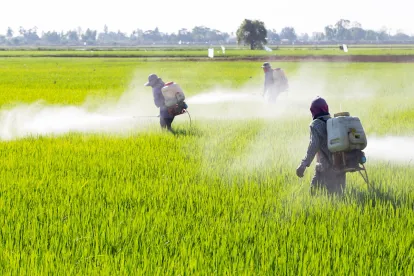According to a May 9, 2022, news item published by the U.S. Environmental Protection Agency (EPA), “Advancing EPA’s Understanding of the Next Generation of Pesticides,” over the past decade, EPA “has received an increasing number of pesticide product applications that potentially contain nanomaterials.” The article notes that EPA’s current pesticide review method was not designed for nanomaterials, so each product is reviewed on a case-by-case basis. An EPA research team led by EPA scientist Dr. Chunming Su conducted an exhaustive search for patents and published literature related to nanopesticides to understand the state of the science. The item states that the team found and analyzed more than 36,000 patents and 500 peer-reviewed journal articles. The team established two general categories of nanopesticides to help inform EPA’s regulatory reviews: products with mostly metal-based nanomaterials as the active ingredient, like nanosilver and nanocopper oxide/hydroxide; and products that encapsulate and carry the active ingredient using nanomaterials (mostly carbon based) like graphene and carbon nanotubes. According to the item, the research team also developed a review framework “that includes a simple decision tree to determine what products should be classified and evaluated as a nanopesticide.” Products determined to contain nanomaterials are subject to additional assessment or data needs from the manufacturer. Dr. Andrew Byro of EPA’s Office of Pesticide Programs (OPP) states that the framework “represents a major steppingstone in the development of a method for identification of nanomaterials.” EPA will use this framework as a platform to help inform its data needs and future determinations regarding the evaluation of nanomaterials in antimicrobial pesticides.
EPA’s research team collected their findings related to the physical and chemical properties and efficacy of nanopesticides in a peer-reviewed journal article in Nature Nanotechnology, “Nano-enabled pesticides for sustainable agriculture and global food security.” According to EPA’s news item, the team “found that nano-enabled pesticides adhere better to plant surfaces and have a reduced impact on non-target organisms. Nanopesticides may also enhance plant resilience against stressors from heat or drought.” EPA states that these benefits “could lead to higher crop yield and provide more agricultural resilience to address climate change and weather extremes.” EPA notes that the research team’s findings “also highlight the data gaps and the need for additional research on potential adverse impacts of nanopesticides.”




 />i
/>i


